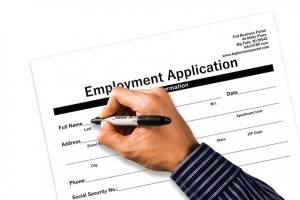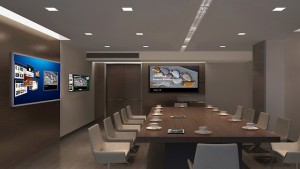By Kayla Matthews
If you traveled back in time and picked up an office worker from the 1950s, they wouldn’t recognize the modern office space as somewhere that you’re supposed to work. The cookie-cutter cube farm is a thing of the past, in favor of open spaces, natural lighting, and workplace personalization. What is workplace personalization and what are the benefits of personalizing your workspace?
What is Workplace Personalization?
If you’re not familiar with the concept, what is workplace personalization? This is one question that if you ask 100 different people, you’ll receive 100 different answers, but most of them agree on one point — that personalization is all about comfort. That can mean different things to different people.
Some might be more comfortable in a private office with a set of noise-canceling headphones while others might be at their most productive in an open-floorplan office where conversations mingle with business discussions.
To us, workplace personalization means making your workspace your own, so it’s a place where you want to spend all your time. The average worker spends upwards of 90,000 hours working throughout their lifetime. What sounds more appealing — spending 90,000 hours in a stark office space or spending that time in an office that you’ve customized to make it your own?
Benefits of Workplace Personalization
What are the benefits of workplace personalization? It can vary from office to office, but in general, workplace personalization can:
- Encourage Productivity — People thrive in different environments. For some that noisy open-floorplan office is ideal, while for others it’s detrimental to their productivity. With that in mind, employees can bring noise-canceling headphones or even take steps to diminish noise in the office so they can be as productive as possible without interfering with others.
- Improve Communication — It can be tricky to stay on task while you’ve got people walking past your desk or talking to you all day long. Allowing employees to personalize their work space gives them the tools to communicate more effectively, whether that means putting a sign up that says “E-mail Only” or restricting communication to specific times during their scheduled workday.
- Creates a Staff-Led Office Culture — Workplace personalization helps to foster a relationship between employees and employers that makes the employees feel special, creating an office culture that’s led by the employees rather than by management.
- Keeps Costs Down — In some situations, personalization means bringing in your own tech and equipment from home, as long as it works with workplace security. This can be an incredible benefit for small businesses and startups that might be looking for a way to cut costs since they won’t need to provide expensive equipment.
- Makes People Want to Come to Work — Finally, while it isn’t the only thing you can do as an employer to make people want to come to work, it definitely helps.
How to Personalize Your Workspace
If you’re not sure where to start, here are a few ideas to help you personalize your workspace so you’re comfortable in the office.
- Make it feel like you. Add knick-knacks to your desk, hang pictures on the walls, whatever it takes to personalize your space and make it feel like part of you. What you bring might depend on how secure your space is and how well you trust your coworkers, but you get the idea.
- Make it work for you. If you can’t stand being interrupted during your day or ambient conversations bother you, soundproof your office or invest in some noise-canceling headphones and hang a sign on your door telling people to email or message you.
- Encourage others to do the same. If your employer is encouraging people to personalize their space, they might be hesitant to be the first to jump on that train. Blaze the trail and others will follow.
Looking Forward
Office personalization is a new and emerging trend but it is one that will likely gain more popularity in the future. However you look at it, those cube-farms that were so popular during previous generations are a thing of the past. We won’t be seeing them again anytime soon.
About the Author: Kayla Matthews writes about communication and workplace productivity on her blog, Productivity Theory. Her work has also appeared on Talent Culture, MakeUseOf, The Muse and Fast Company.
Photo by Carl Heyerdahl on Unsplash



